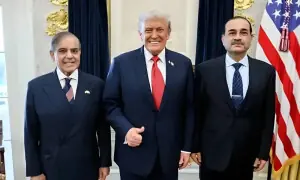Stakeholders suggest shortening excess unit duration for solar power consumers
The government is looking into ways that will discourage consumers from installing excess solar capacity in order to lessen burden on DISCOs as well as non-solar customers.
Although there has been speculation about net metering being ended all together, the government is likely to revise the duration for which net metering units are carried forward from three months to one month as well as changing buyback rates to average.
The existing system allows units to be carried forward for three months which experts believe is too long. Experts believe that this will encourage self-consumption and battery energy storage system rather than over installation of high capacity solar PV system.
The government also wishes to change the buy back rate to average cost, which means it will increase the payback rate from three to five years.
The proposals were shared in a recent session called “Net Metered Distributed Generation; Challenges Solutions and Way Forward” where representatives of all stakeholders including NEPRA and DISCOs were present.
The session highlighted the rapid growth of distributed solar generation, with over 130,000 net-metered systems generating 3TWh of energy annually. However, this growth has also brought to light several technical challenges that require careful consideration.
One key issue is the current policy allowing NM consumers to carry forward excess units for three months. This incentivizes over-installation of solar capacity, potentially leading to grid instability. Participants, including Distribution Companies (Discos) and experts, proposed limiting this carry-forward facility to a monthly basis to encourage self-consumption and battery storage systems, rather than excessive solar installations.
The session also emphasized the need for a centralized body to oversee NM activities across all Discos. This body would monitor rooftop solar integration, analyze hosting capacity, and address technical issues, providing recommendations to manage NM connections in high and low-density areas.
Technical challenges related to high consumer voltage, distribution transformer power rating breaches, power quality issues, and increased reverse power flow due to unauthorized solar installations were also discussed.
The current regulations allow NM for three-phase consumers with a PV connection limit of 1.5 times the sanctioned load. However, Discos highlighted that this allowance leads to disparities, with some consumers installing significant solar capacity before transformer limits are reached. Experts and Discos proposed reducing the NM capacity limit to one time the sanctioned load, aligning with practices in countries like Bangladesh, Saudi Arabia, and India.
The session also addressed the issue of unauthorized solar installations exceeding the sanctioned load limit, which can lead to power quality issues and over-voltage problems. Experts emphasized that Discos have the authority to take action against such unauthorized installations in accordance with NEPRA guidelines.
For the latest news, follow us on Twitter @Aaj_Urdu. We are also on Facebook, Instagram and YouTube.

















Comments are closed on this story.